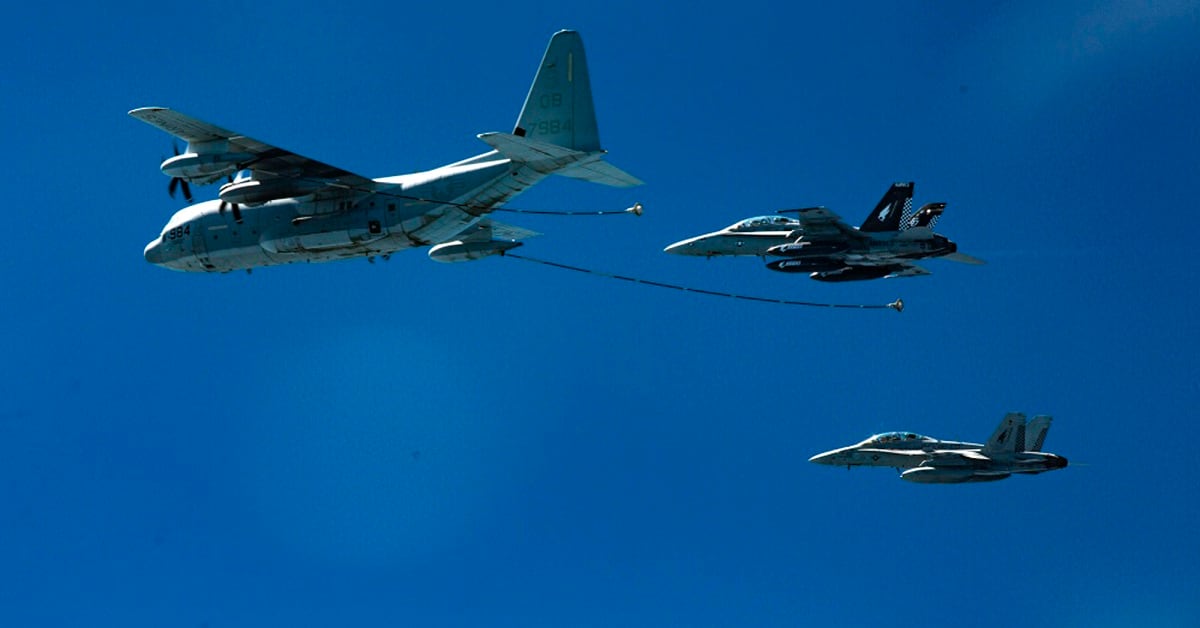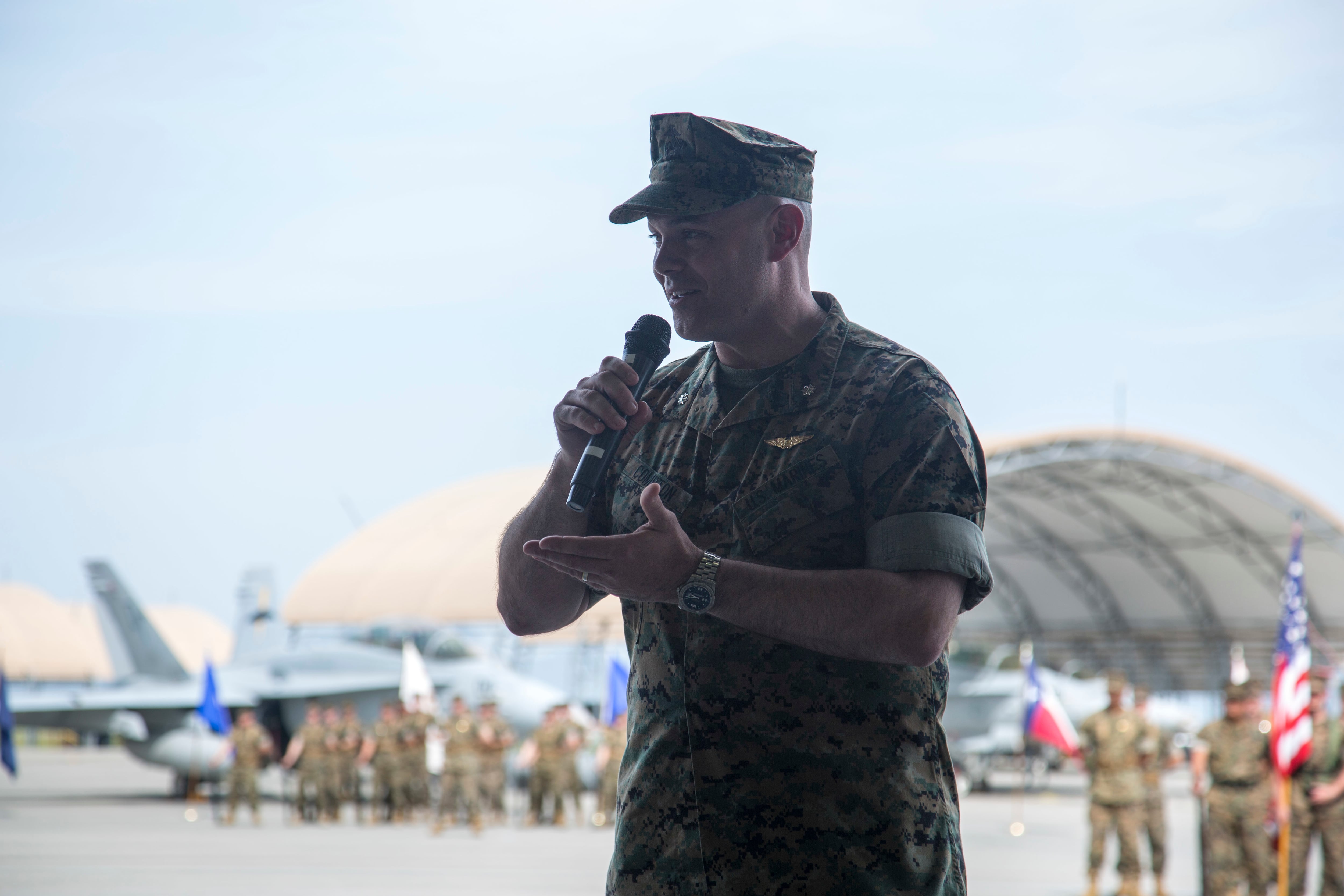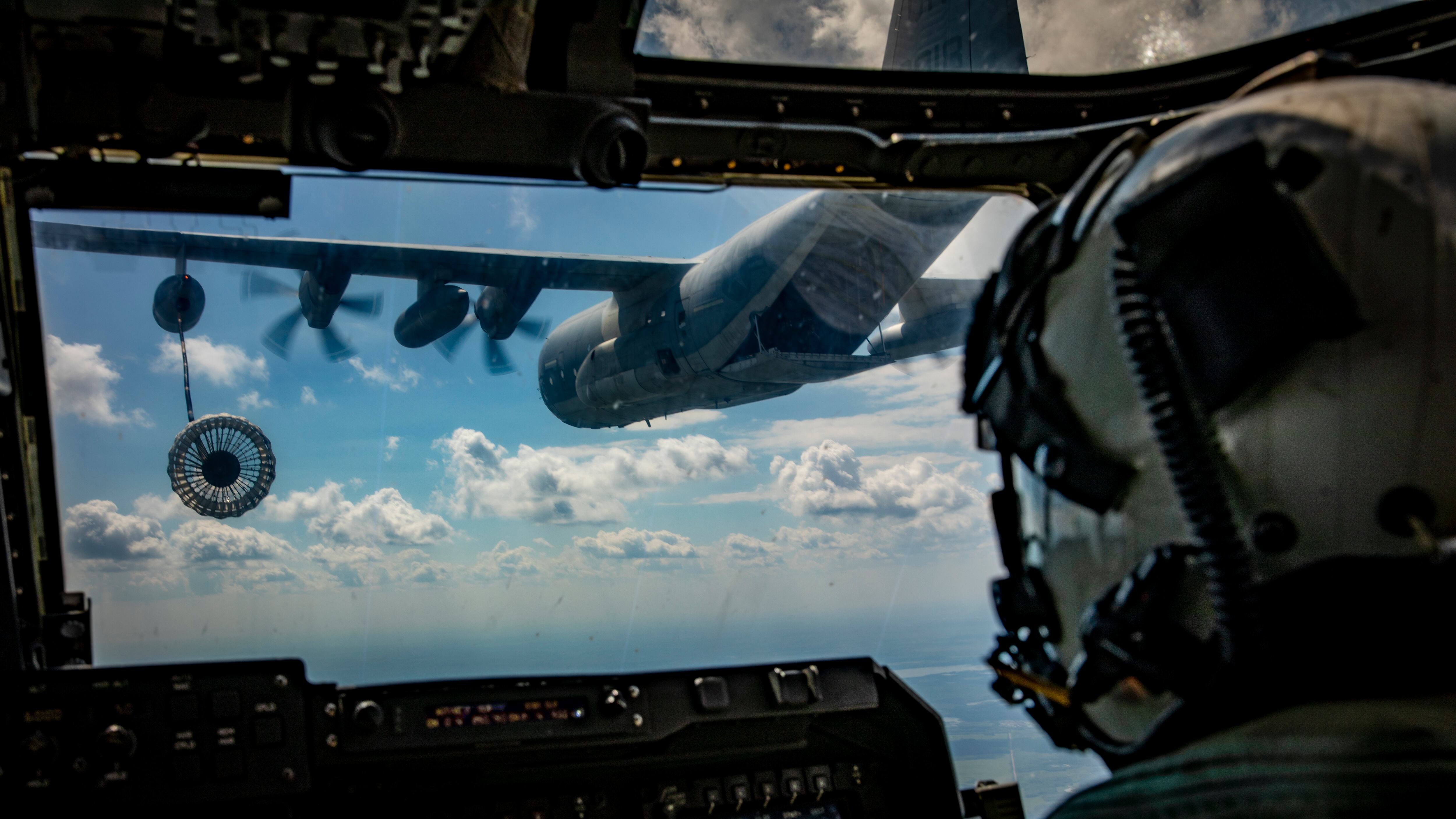During the investigation of the deadly 2018 midair collision of a KC-130 and Hornet, the Corps discovered a strikingly similar mishap in 2016, which was improperly investigated.
The Corps decided to reopen the investigation into a midair collision between a KC-130 and F/A-18 that occurred on April 28, 2016, off the coast of Japan.
No one was killed in the 2016 incident, and both aircraft were able to land. But, a Hornet did impact and shear off the refueling hose and drogue of a KC-130J, damaging both aircraft during a night time low-light level refueling exercise.
The completed investigation of that mishap was included in the command investigation of the deadly 2018 crash that killed six Marines.
RELATED

Both midair collisions were eerily similar, and had the 2016 incident been properly investigated it could have provided insights that might have prevented the tragic 2018 crash.
The two midair collisions both involved night refueling training between Marine Aerial Refueler Transport Squadron 152 and Marine All Weather Fighter Attack Squadron 242.
The investigation of 2016 incident found failures in mission planning, operational risk management, an inexperienced pilot not qualified for night time refueling exercises and a lax command atmosphere that resulted in complacency and a disregard for regulations.
These were the same findings in the 2018 crash investigation.
In both mishaps, the pilots erroneously had been certified as being qualified for nighttime refueling despite having not completed the steps required in the training and readiness manual for that event.
During the 2016 accident, the pilot was inexperienced and was conducting his first ever low light level night system air refueling, the investigation detailed. There was missing information with the flight schedules found in both mishaps to include absent refueling tanker details, no completed risk assessment and there was no solar lunar data included in either briefs, according to the investigation.
During the 2016 night refueling exercise, the Hornet made a “nonstandard” maneuver when it arrived at the KC-130 and when it departed following refueling.
The 2018 mishap found that the pilot of crashed F/A-18 was requested to make a “nonstandard” echelon left movement after completion of refueling, despite not having been properly briefed he would be making such a movement. The Corps explained that its standard practice for aircraft to arrive at the KC-130 formed up on the left and to depart following refueling on the right.
Making an echelon left maneuver is not a more complicated maneuver, Capt. Christopher Harrison, a Marine spokesman, explained to Marine Corps Times, but it is not the normal practice.
The pilot of the 2016 mishap came within five feet to 10 feet of hitting the back of the KC-130J, but managed to avoid a total collision.
RELATED

The investigation also found issue with the pilot’s fight control inputs, “which caused the mishap aircraft to turn into the mishap tanker,” the investigation reads.
The result was only minor damage from shearing off part of the refueling hose. The accident was listed as a Class C mishap.
A Class C mishap is defined by the Navy as an accident resulting in $50,000 or more in damages but less than $500,000, or a nonfatal injury that causes loss of time from work.
The investigation of the 2016 accident said there was a delay in convening the aviation mishap board, which convened on June 16, 2016. It took almost two months following the 2016 mishap for the board to gather.
No administrative investigation of the 2016 mishap was completed prior to 2019, as required by the Corps.
The Hornet involved in the 2016 accident was flying near the Kadena Air Force Base off the coast of Okinawa, Japan at the time of the incident.
Shawn Snow is the senior reporter for Marine Corps Times and a Marine Corps veteran.





